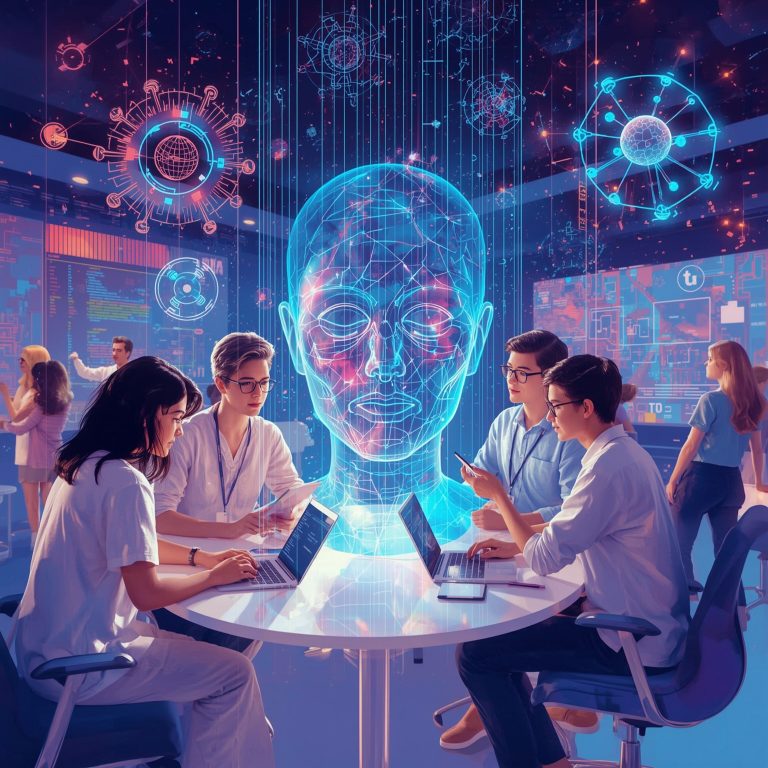A leading figure from the Trump administration’s economic team has presented a thought-provoking theory regarding the current stagnation observed within the labor market. Kevin Hassett, who served as the director of the National Economic Council, proposed during an interview on CNBC’s “Squawk Box” that the widespread integration of artificial intelligence may be driving worker productivity to unprecedented heights. This surge in efficiency, he suggested, could be prompting employers to ease—or even pause—their efforts to recruit additional staff, as the enhanced output from existing employees reduces the immediate necessity for new hires.
Hassett explained his perspective using the metaphor of a potential lull, or what he described as a “quiet time,” within hiring trends. Speaking to host Joe Kernen, he elaborated that companies, now benefiting from AI-enabled productivity tools and automation systems, are finding that their current workforce can accomplish far more with fewer resources and less human input. Consequently, organizations feel less pressure to bring in recent graduates or entry-level workers, particularly those emerging from universities and technical programs. The phenomenon underscores how rapid technological progress—especially in AI—can reshape labor dynamics in subtle yet profound ways, changing the speed and pattern of job creation even as overall business efficiency continues to climb.
Nonetheless, Hassett emphasized that this slowdown should not be interpreted as a long-term threat to employment or economic growth. In his view, artificial intelligence, despite temporarily tempering the pace of hiring, will ultimately prove to be a powerful engine of job creation. He argued that as AI-driven productivity stimulates broader economic expansion—fueling both output and income growth—the natural mechanisms of a free-market economy will generate new avenues for spending, innovation, and entrepreneurship. These emerging opportunities, he predicted, will, in turn, foster demand for fresh labor, enabling the system to rebalance and return to growth equilibrium relatively quickly.
Supporting evidence of AI’s disruptive potential already exists. Researchers at Stanford University recently identified a notable shift within the software development sector, where automation and AI-assisted programming tools are beginning to supplant certain junior-level positions. Their study found that by July 2025, employment among 22- to 25-year-old developers is projected to fall by nearly 20% compared with the hiring peak recorded in late 2022. This trend illustrates, in tangible form, how entry-level roles—particularly those requiring repetitive or codified skills—are among the first to be affected by technological substitution.
The Trump administration, for its part, has pursued an assertive agenda to advance AI research and implementation across industries. President Trump signed multiple executive orders designed to streamline regulatory barriers and stimulate the development of robust AI infrastructure. Among these initiatives is the extensive $500 billion Stargate Project, aimed at fostering the expansion of data centers and digital networks capable of sustaining large-scale computational processes required by cutting-edge AI applications.
However, recent data from the Bureau of Labor Statistics provides a more sobering snapshot of the economy’s current trajectory. In August, employers added only 22,000 nonfarm jobs—a figure that fell sharply short of Wall Street analysts’ expectations, which had anticipated an increase of approximately 80,000. Simultaneously, the unemployment rate edged upward to 4.3%, marking its highest level since October 2021, a period when the national economy was still gradually stabilizing after the disruption of the pandemic.
Owing to the ongoing government shutdown, no subsequent official employment data have been released. Yet the broader picture painted by private-sector announcements appears consistent with the notion of a hiring slowdown. In October alone, retail giant Amazon revealed plans to reduce its corporate workforce by approximately 14,000 positions, while Target announced cuts affecting about 1,000 white-collar employees, explaining that the move was intended to eliminate overlapping responsibilities and enhance organizational efficiency.
As this evolving dynamic unfolds—where extraordinary productivity coexists with restrained hiring—the federal government’s position remains a subject of public and economic interest. The White House, when approached for clarification or official comment on the matter, did not provide an immediate response. This silence, deliberate or circumstantial, further underscores the uncertainty surrounding how both policymakers and businesses will adapt to the transformative power of artificial intelligence as it continues to redefine employment patterns in the years ahead.
Sourse: https://www.businessinsider.com/top-trump-economic-aide-attributing-labor-market-softness-to-ai-2025-11



